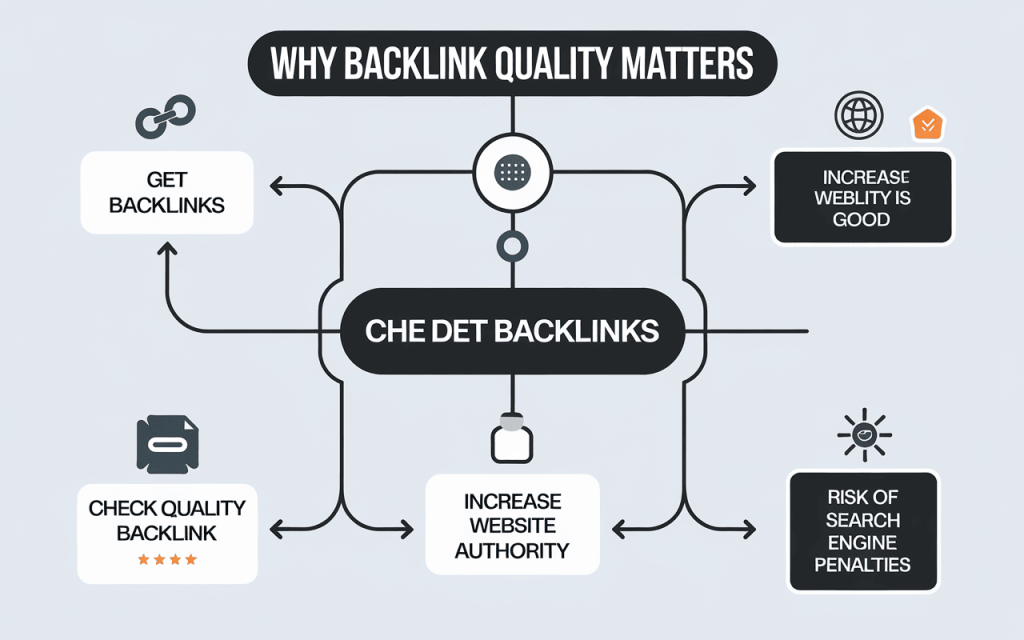In the ever-evolving world of Search Engine Optimization (SEO), backlinks remain a crucial component of building authority, driving organic traffic, and improving search engine rankings. However, not all backlinks are created equal. The quality of your backlinks can significantly impact your website’s performance, either boosting it to new heights or dragging it down. This is where backlink quality analysis becomes essential.
In this blog, we will explore the importance of backlink quality analysis, how to differentiate between good and bad backlinks, tools to help you evaluate them, and actionable strategies to maintain a healthy backlink profile.
Understanding Backlinks and Their Role in SEO
Search engines, like Google, consider these links as votes of confidence. When reputable websites link to your content, it signals to search engines that your content is valuable, credible, and worth ranking higher in search results.
However, not all backlinks contribute positively to your SEO. Some can harm your website’s credibility and rankings. This makes it imperative to analyze the quality of your backlinks rather than focusing solely on quantity.
Why Backlink Quality Matters

1. Improved Search Engine Rankings
Search engines prioritize websites with high-quality backlinks from authoritative sources. A single link from a trusted domain can carry more weight than hundreds of links from low-quality websites. Quality backlinks demonstrate relevance and authority in your niche, making your website more appealing to search algorithms.
2. Better Organic Traffic
High-quality backlinks often come from websites with significant traffic. When users visit these sites and click on links to your content, you gain referral traffic that is likely to be relevant and engaged. Poor-quality backlinks, on the other hand, may come from sites with little to no traffic, offering no real value.
3. Avoiding Penalties
Search engines penalize websites with manipulative or spammy backlinks. Google’s Penguin algorithm, for instance, targets sites that engage in link schemes or have unnatural link profiles. A penalty can result in significant drops in rankings and traffic, making it critical to regularly analyze and disavow harmful backlinks.
4. Enhancing Brand Reputation
Backlinks from respected websites not only improve SEO but also boost your brand’s credibility. When authoritative sites vouch for your content, users are more likely to trust and engage with your brand.
Characteristics of High-Quality Backlinks
Not all backlinks are equal. typically share the following characteristics:
- Relevance: The linking website and the anchor text should be relevant to your industry or content. For example, a backlink from a health blog to a fitness product page is more valuable than one from an unrelated niche.
- Authority: Links from high-domain authority (DA) websites carry more weight. Tools like Moz’s Domain Authority or Ahrefs’ Domain Rating can help you evaluate the authority of a linking domain.
- Traffic: Links from websites with substantial traffic can drive more visitors to your site and improve your visibility.
- Natural Placement: High-quality backlinks occur naturally, often because your content is valuable and shareable. Manipulated or forced links can trigger penalties.
- Dofollow vs. Nofollow: While both types of links have their place, dofollow links pass SEO value to your website. A balanced mix of dofollow and nofollow links ensures a natural backlink profile.
- Anchor Text: The anchor text should be descriptive and relevant, avoiding over-optimization or excessive use of exact-match keywords.
Identifying Low-Quality Backlinks
Low quality backlinks can harm your SEO efforts and must be identified and addressed. Common characteristics include:
- Spammy Websites: Links from sites with poor content, excessive ads, or no real purpose are often harmful.
- Irrelevant Links: Backlinks from unrelated niches indicate manipulation and lack of relevance.
- Paid Links: Purchasing links is against Google’s guidelines and can lead to penalties if discovered.
- Over-Optimized Anchor Text: Repeated use of exact-match keywords in anchor text appears unnatural.
- Link Farms: These are networks of websites created solely to exchange links. Links from such sites are considered spammy.
- Foreign or Non-Contextual Sites: Links from irrelevant international sites with no contextual relevance are red flags.
How to Conduct Backlink Quality Analysis

Backlink quality analysis involves evaluating your website’s inbound links to determine their impact on your SEO. Here’s how to get started:
1. Use SEO Tools
Tools like Ahrefs, SEMrush, Moz, and Google Search Console can help you identify and analyze your backlinks. These platforms provide metrics such as domain authority, traffic estimates, anchor text, and more.
2. Check Domain Authority and Relevance
Evaluate the linking domains to ensure they are authoritative and relevant to your niche. Links from high-DA, industry-related sites are more beneficial.
3. Analyze Anchor Text
Review the anchor text for natural language and avoid over-optimized keywords. Diverse and relevant anchor text is a positive signal.
4. Assess Traffic and Engagement
Links from websites with substantial traffic are likely to bring more value. Tools like SimilarWeb can provide insights into a domain’s traffic.
5. Spot Spammy Links
Identify links from spam, low-quality, or irrelevant sites. If necessary, use Google’s Disavow Tool to neutralize their impact.
Tools for Backlink Quality Analysis
Several tools can streamline your backlink analysis efforts:
- Google Search Console: Offers a free overview of your backlink profile and allows you to disavow harmful links.
- Ahrefs: Provides comprehensive backlink data, including domain authority, anchor text, and referring pages.
- SEMrush: Offers in-depth analysis of backlinks and toxic link detection.
- Moz Link Explorer: Evaluates domain authority, link equity, and spam scores.
- Majestic: Focuses on trust flow and citation flow metrics to assess link quality.
Maintaining a Healthy Backlink Profile
To ensure your backlink profile remains robust and beneficial, follow these best practices:
1. Focus on Content Quality
High-quality content naturally attracts backlinks. Publish well-researched, engaging, and shareable content that adds value to your audience.
2. Build Relationships
Networking with industry influencers, bloggers, and website owners can lead to natural backlinks. Participate in guest blogging, collaborations, and partnerships to gain credible links.
3. Avoid Black-Hat Practices
Steer clear of manipulative tactics such as buying links, participating in link schemes, or creating link farms. These can result in severe penalties.
4. Diversify Your Links
A diverse backlink profile with links from various sources, industries, and geographies appears more natural and credible.
5. Regular Audits
Perform periodic backlink audits to identify and address harmful links. Use tools to monitor changes and ensure your profile remains optimized.
6. Disavow Harmful Links
If you discover toxic backlinks that cannot be removed, use the Disavow Tool in Google Search Console to minimize their impact.
Conclusion
Backlink quality analysis is a cornerstone of effective SEO strategy. By focusing on the quality rather than the quantity of backlinks, you can enhance your search engine rankings, attract more organic traffic, and safeguard your website from penalties. Regular analysis, combined with strategic link-building efforts, will help you maintain a healthy backlink profile and ensure long-term SEO success.
Investing time in analyzing and optimizing your backlinks is not just beneficial—it is essential in today’s competitive digital landscape. Start prioritizing backlink quality today, and watch your website reach new heights in search performance.

